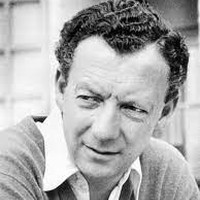Details

Dmitri Shostakovich
String Quartet No. 3 in F
Shostakovich had his first run-in with Stalin in 1936, when the young composer was blasted for producing “Muddle Instead of Music,” to quote the title of a scathing editorial. Stalin’s tight control over Soviet artists relaxed slightly during World War II, and Shostakovich bounced back with his Seventh Symphony—a tribute to the besieged city of Leningrad—but the risks intensified again after the war. Given the criticism Shostakovich faced in 1945 for his Ninth Symphony, a charming little work that was a far cry from the expected ode to victory, he knew to tread carefully. He completed only one composition in 1946, the String Quartet No. 3 written for the Beethoven Quartet, his longtime collaborators who premiered all but the first and last of his 15 string quartets. His caution, it turned out, was well founded: he was among the composers singled out for condemnation in 1948, a very dangerous time to be on the wrong side of Stalin.
For the 1946 premiere, Shostakovich provided the Third Quartet with subtitles for each movement corresponding to the arc of war, starting with “Blithe ignorance of the future cataclysm” to characterize the first movement. Shostakovich soon disavowed the subtitles, and it seems likely that they only existed to insulate the quartet from criticism of its ideological stance (or lack thereof). In reality, this quartet contains many layers of nuanced meaning that transcend any implied narrative. That description of “Blithe ignorance” for the first movement may have provided cover for music that is unabashedly playful, but it hardly captures the thrust of this finely wrought movement in the Classical tradition of Haydn and Beethoven (with traces of Bach, as heard in the formal counterpoint).
The next movement, at a tempo marked Moderato con moto, originally sported the label, “Rumblings of unrest and anticipation.” This unsettled music in a forward-leaning, three-beat meter substitutes for a customary slow movement. The following section is even more assertive, taking the form of a hard-charging march that came with the subtitle, “Forces of war unleashed.” The work’s only slow movement is the brief Adagio (“In memory of the dead”) that functions as a somber introduction to the finale. This fifth movement is the longest and most hermetic portion of the work, and it resonates far beyond Shostakovich’s supposed war narrative as it asks “The eternal question: Why? And for what?”
Aaron Grad ©2015
 Listen to Audio
Listen to Audio
Benjamin Britten
Quartet No. 2 in C, Op. 36
About This Program
Our celebration of the centenary of Benjamin Britten’s birth opens with this program. In 1945, upon the war’s conclusion, Britten toured Germany with violinist Yehudi Menuhin to perform recitals for concentration camp survivors. His Second Quartet was written immediately upon his return to England after this life-changing experience.
